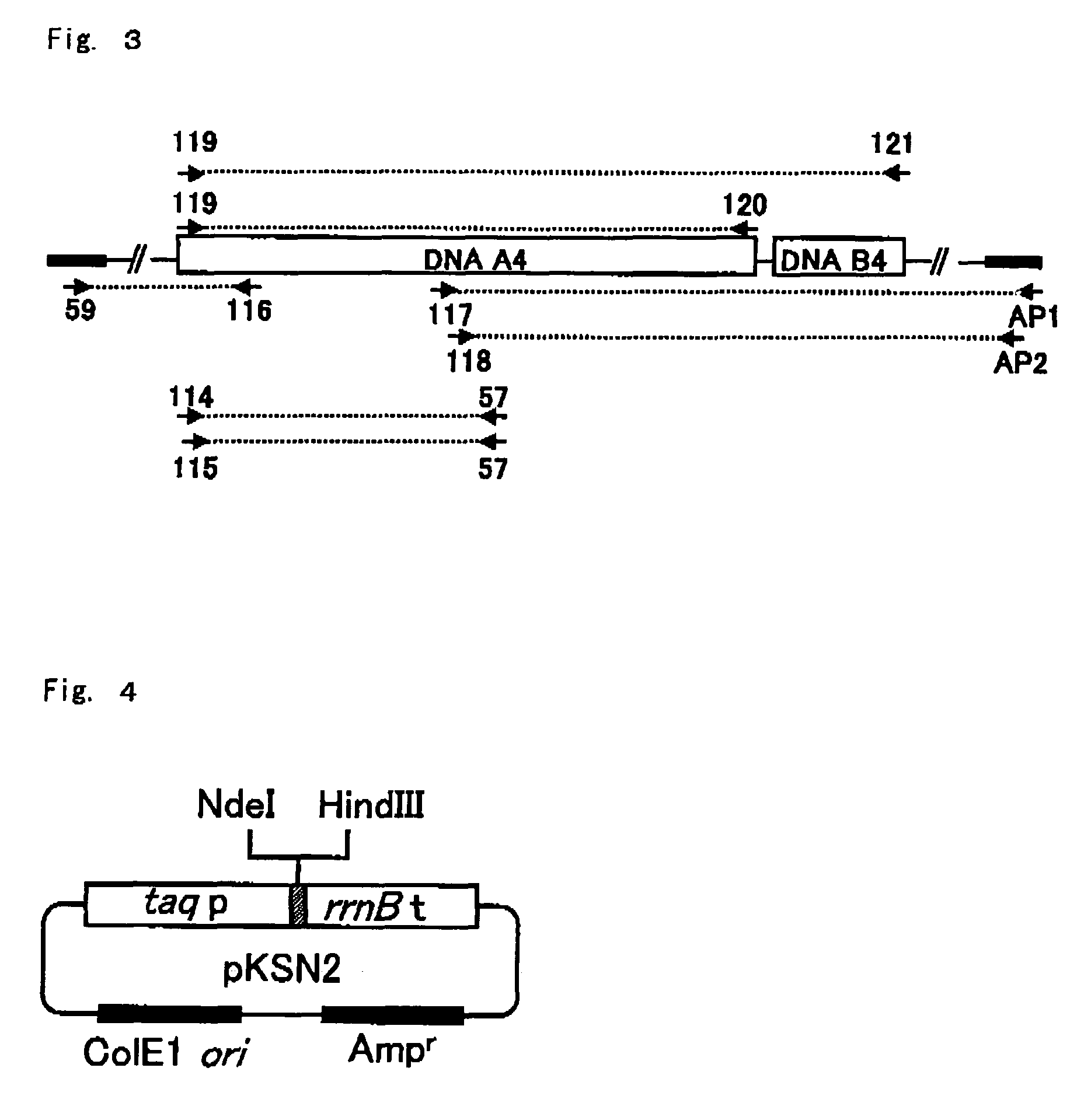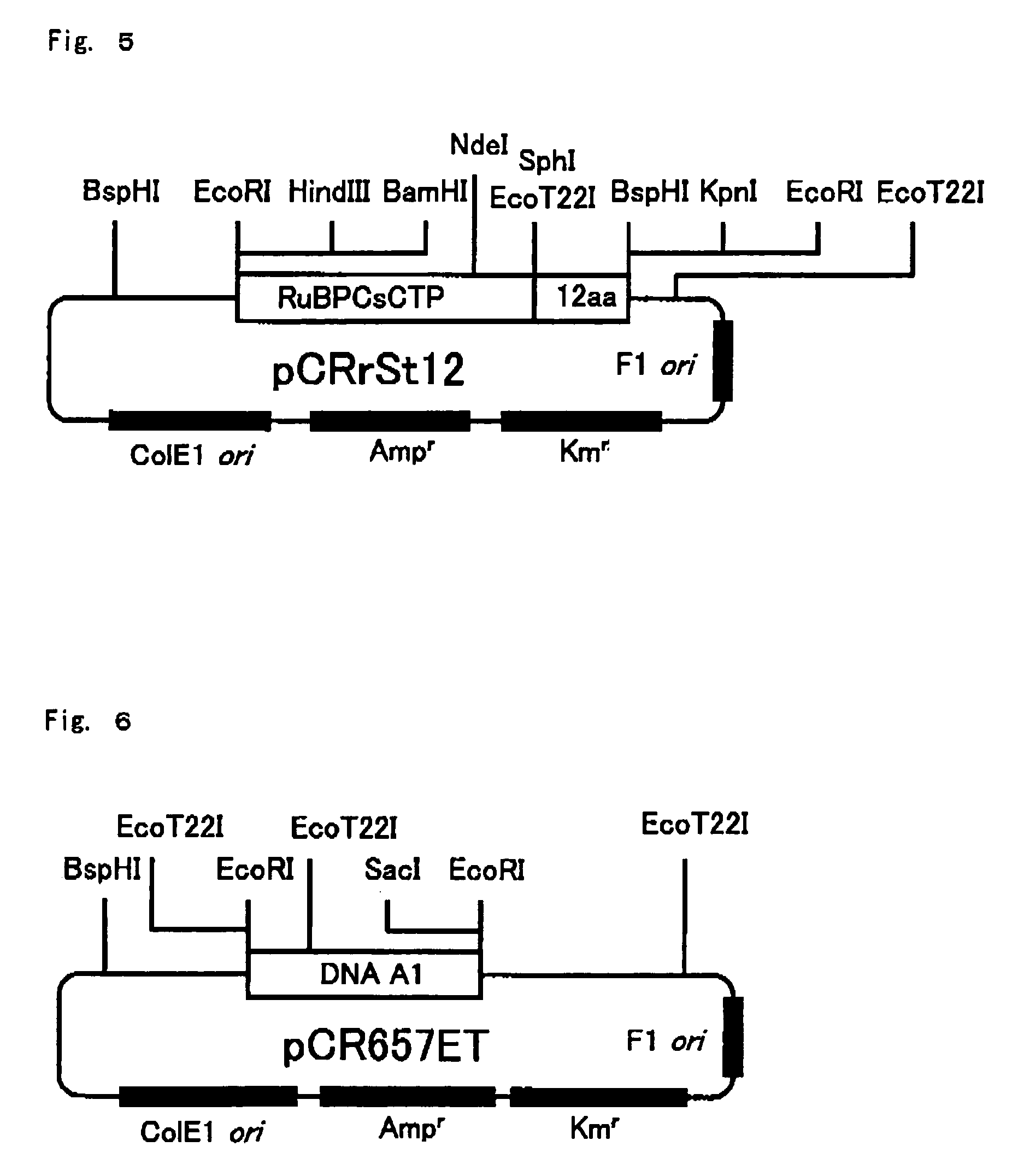Weed controller metabolism proteins, genes thereof and use of the same
a technology of metabolism proteins and weed controllers, applied in the field of weed controller metabolism proteins, genes thereof and use of the same, can solve the problems of small effects of left-over solutions or residues on the environment or crops, and it is difficult to distinguish cultivated plants from weeds of allied species, and achieves the effect of low herbicidal activity
- Summary
- Abstract
- Description
- Claims
- Application Information
AI Technical Summary
Benefits of technology
Problems solved by technology
Method used
Image
Examples
example 1
The Metabolism of Compound (II) by a Microorganism
(I) Metabolism of Compound (II)
[0434]The various microorganisms shown in Tables 1 and 2 were grown in ISP2 agar medium (1.0% (w / v) malt extract, 0.4% (w / v) yeast extract, 0.4% (w / v) glucose, 2.0% (w / v) agar, pH 7.3). A “loopful” of the each microorganism was added to TGY medium (0.5% (w / v) tryptone, 0.5% (w / v) yeast extract, 0.1% (w / v) glucose, 0.01% (w / v) KH2PO4, pH 7.0) and incubated with shaking at 30° C. for 2 to 4 days. One-tenth milliliter (0.1 ml) of the obtained culture was incubated with shaking in 3 ml of sporulation medium (0.1% (w / v) of meat extract, 0.2% (w / v) tryptose, 1% glucose, pH 7.1) containing compound (II) at 100 ppm for 7 to 8 days at 30° C. Fifty microliters (50 μl) of 2N HCl was added to the resulting culture and this was exacted with 3 ml of ethyl acetate. The obtained ethyl acetate layer was analyzed on the HPLC. The concentration of compound (II) was reduced (column retention time of 23.9 minutes) and new p...
example 2
Preparation of the Present Invention Protein (A1)
(1) Preparation of the Crude Cell Extract
[0444]A frozen stock of Streptomyces phaeochromogenes IFO12898 was added to 100 ml of A medium (0.1% (w / v) glucose, 0.5% (w / v) tryptone, 0.5% (w / v) yeast extract, 0.1% (w / v) of dipotassium hydrogenphosphate, pH7.0) in a 500 ml triangular flask and incubated with rotary shaking at 30° C. for 1 day to obtain a pre-culture. Eight milliliters (8 ml) of the pre-culture was added to 200 ml of A medium and was incubated with rotary shaking in 500 ml a baffled flask at 30° C. for 2 days. Cell pellets were recovered by centrifuging (3,000 g, 5 mm.) the resulting culture. These cell pellets were suspended in 100 ml of B medium (1% (w / v) glucose, 0.1% beef extract, 0.2% (w / v) tryptose) containing compound (II) at 100 ppm and were incubated with reciprocal shaking in a 500 ml Sakaguchi flask for 16 hours at 30° C. Cell pellets were recovered by centrifuging (3,000 g, 5 min.) 10 L of the resulting culture. ...
example 3
Obtaining the Present Invention DNA (A1)
(1) Preparation of the Chromosomal DNA of Streptomyces phaeochromogenes IFO12898
[0453]Streptomyces phaeochromogenes IFO12898 was incubated with shaking at 30° C. for 1 day to 3 days in 50 ml of YEME medium (0.3% (w / v) yeast extract, 0.5% (w / v) bacto-peptone, 0.3% (w / v) malt extract, 1.0% (w / v) glucose, 34% (w / v) sucrose and 0.2% (v / v) 2.5M MgCl2.6H2O). The cells were recovered. The obtained cells were suspended in YEME medium containing 1.4% (w / v) glycine and 60 mM EDTA and further incubated with shakking for a day. The cells were recovered from the culture medium. After washing once with distilled water, it was resuspended in buffer (100 mM Tris-HCl (pH8.0), 100 mM EDTA, 10 mM NaCl) at 1 ml per 200 mg of the cells. Two hundred micrograms per milliliter (200 μg / ml) of egg-white lysozyme were added. The cell suspension was incubated with shaking at 30° C. for a hour. Further, 0.5% of SDS and 1 mg / ml of Proteinase K was added. The cell suspensio...
PUM
| Property | Measurement | Unit |
|---|---|---|
| resistance | aaaaa | aaaaa |
Abstract
Description
Claims
Application Information
 Login to View More
Login to View More - R&D
- Intellectual Property
- Life Sciences
- Materials
- Tech Scout
- Unparalleled Data Quality
- Higher Quality Content
- 60% Fewer Hallucinations
Browse by: Latest US Patents, China's latest patents, Technical Efficacy Thesaurus, Application Domain, Technology Topic, Popular Technical Reports.
© 2025 PatSnap. All rights reserved.Legal|Privacy policy|Modern Slavery Act Transparency Statement|Sitemap|About US| Contact US: help@patsnap.com



